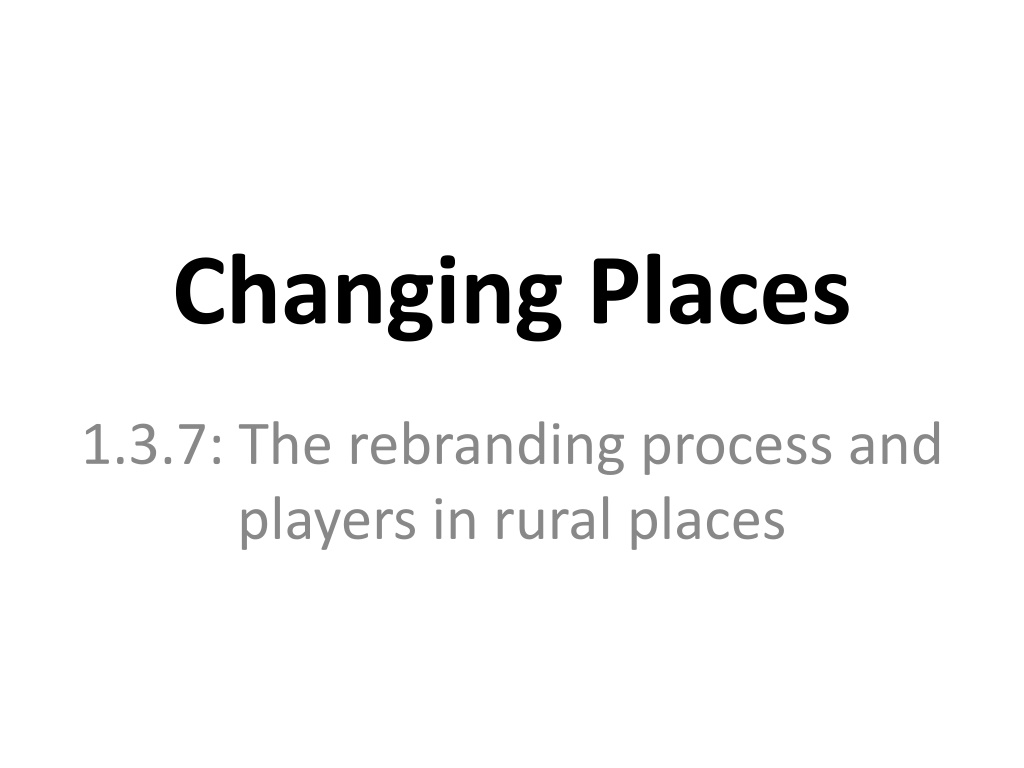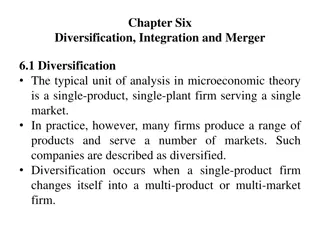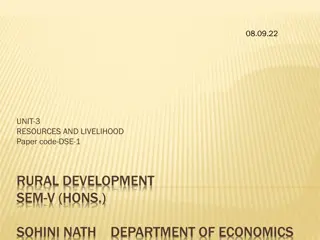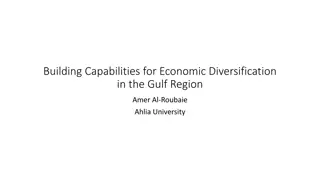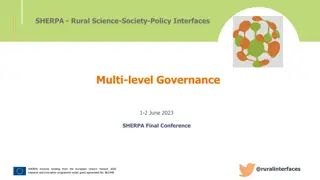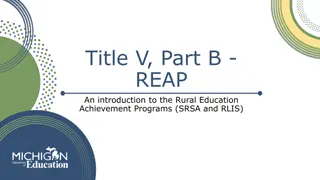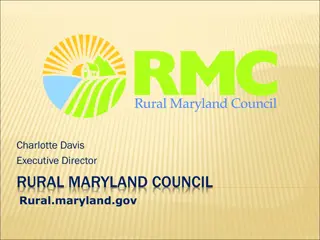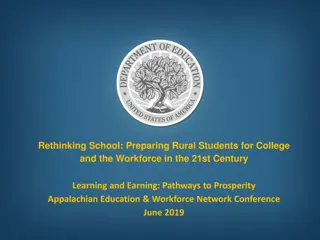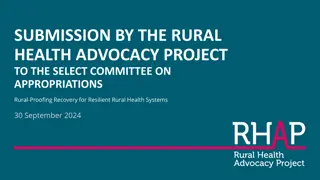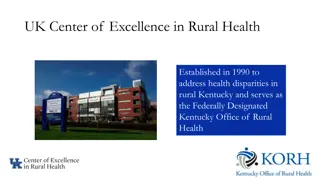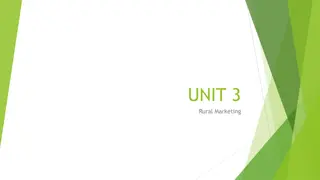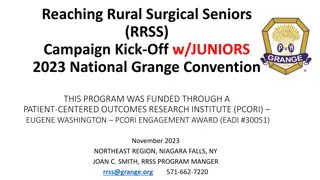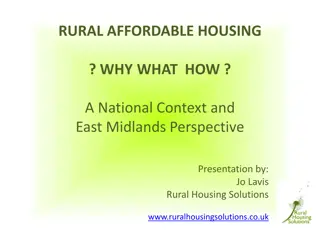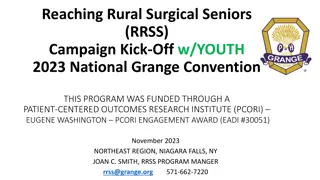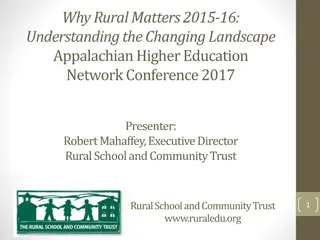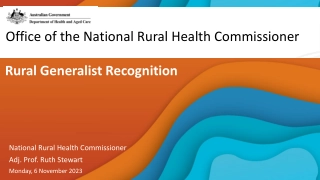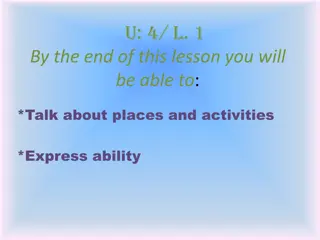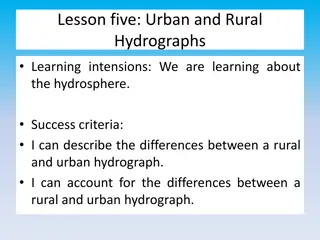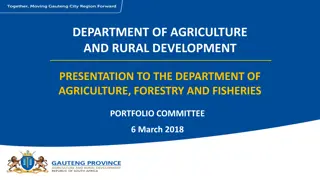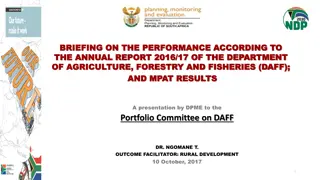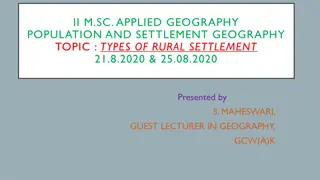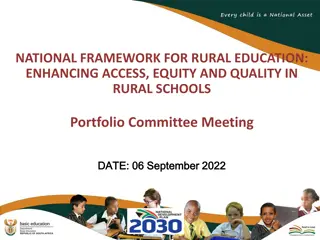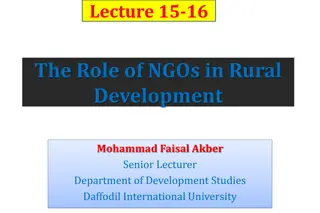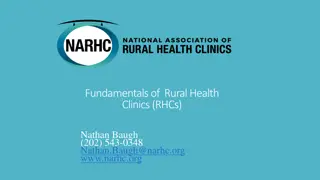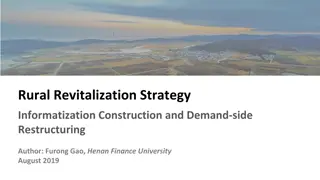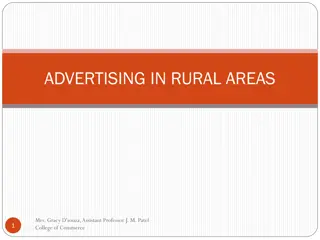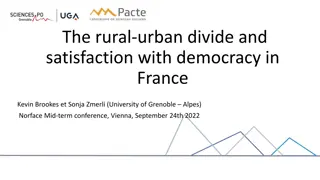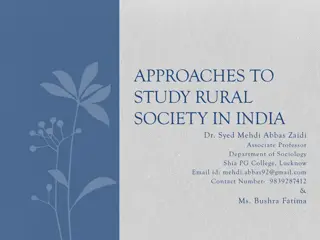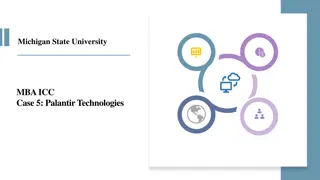Rebranding and Diversification in Rural Places
Exploring the rebranding process and diversification in rural areas, this content discusses how local groups and external agencies are transforming post-productive countryside through recreation, heritage, media, and event management. It delves into the consequences of rebranding on perceptions, behaviors, and businesses, shedding light on the changing landscape of rural communities.
Download Presentation

Please find below an Image/Link to download the presentation.
The content on the website is provided AS IS for your information and personal use only. It may not be sold, licensed, or shared on other websites without obtaining consent from the author. Download presentation by click this link. If you encounter any issues during the download, it is possible that the publisher has removed the file from their server.
E N D
Presentation Transcript
Changing Places 1.3.7: The rebranding process and players in rural places
What you need to know: content a. Diversification in the post-productive countryside is achieved through re-imaging and regenerating rural places through recreation, heritage, media and event management that have been driven by local groups and external agencies The consequences of rebranding on the perceptions, actions and behaviours of people, including those in other places who choose to relocate there, changes to businesses and the local community b.
What you need to know: terms Diversification: widening the range of (economic) activities in order to spread risk and maximise gains Post-productive countryside: a rural place whose economy is no longer based on agriculture. This is a reflection of the increasingly small % of the workforce in traditional rural employment (detailed later) and its contribution to the overall economy (c. 1% of GDP in 2014) though rural areas still contribute a reasonably large % of total GVA (Gross Value Added measures the contribution to the economy of each individual producer, industry or sector in the UK). It is particularly relevant to rural areas that have been rebranded (equivalent to post-industrial cities) Rebranding: how a place is re-developed and marketed to gain a new identity often aiming to change negative imagery that might exist so that it can then attract new investors and visitors. It will involve re-imaging and (usually) regeneration. Heritage: all inherited resources which people value for reasons beyond mere utility (English Heritage)
What are rural areas? Since 2004, UK Gov (for census/statistical purposes) has defined areas as rural if they fall outside of settlements with more than 10,000 resident population Rural and urban areas are also subdivided into sparse and not sparse : 2011 Rural Urban Classification - User Guide
What are rural areas? This table shows the proportions of these areas in the 2011 census: OA Class refers to Output Area the smallest census unit (with approx. 309 people) What % of OAs were classed as rural and urban in 2011? Why does this give a misleading image of land distribution? As OAs vary in size (bigger in rural areas), rural places actually accounted for 85% of England s area but only 17.6% of the population, the majority in not sparse places
Describe the distribution of rural areas in England and Wales. Try to distinguish between different types of rural spaces Suggest reasons for this pattern. 2011 Rural Urban Classification - User Guide https://www.gov.uk/government/collections/rural-urban-classification
How has the economy of rural areas changed? Traditional rural economy: Agricultural workforce: c. 22% in 1841, less than 1% in 2011 2011 census: 3.4% in Agriculture/Forestry/Fishing (with a further 0.2% in mining & quarrying) 71% UK land area used for agriculture Defra estimates: Ag/Fo/Fi: 2% of GVA in rural areas c. 1.1% of total GDP (2016) 15.6% of registered businesses in rural areas (32% in sparse rural areas) Rural areas contributed 17% of total GVA in 2014 Non-traditional rural economy: Defra estimate 2009/10: tourism accounted for 10.2% of enterprises, 7.3% of turnover and 12.6% of employment in rural areas A useful document showing changes in UK employment over time: http://webarchive.nationalarchives.gov.uk/20160105160709/http://www.ons.gov.uk/ons/rel/ce nsus/2011-census-analysis/170-years-of-industry/170-years-of-industrial-changeponent.html
Employment change in rural areas What have been the key changes in employment as shown in this graph? Employment change in rural areas of England, 2008-2012
Why has the primary workforce declined? Agriculture: Technological developments replace human labour*: mechanisation as well as new processes (e.g. controlling CO2 in glasshouses) Increasing size of individual farms*: small family farms merge into large farms 2012: 53% holdings >20ha, 19% >100ha, average size of all holdings 77ha. Growth of factory farming*: not just animals but also salad vegetables which are picked, packed and priced in industrial units also encouraged by supermarkets demand for cheap, reliable, uniform produce that relies on economies of scale and high inputs that can only be achieved on large farms Demand for year-round crops: has increased need for imports (e.g. salad vegetables from Spain, flowers from Kenya ) often cheaper, therefore undercutting domestic production. *often considered to indicate that agriculture has become more industrialised
Why has the primary workforce declined? Mining/quarrying: Has also suffered from cheaper foreign imports, also ores etc. more difficult to extract (easier areas already mined out) and issues over extending licenses in light of environmental impacts Fishing: Impacts of overfishing and EU controls has led to decline of fishing fleets in UK
How are rural areas perceived and why? Read this resource which are some teacher notes for lessons that have been produced by the Royal Geographical Society: Lesson 1: Escape to the Countryside: investigating a rural sense of place https://www.rgs.org/NR/rdonlyres/754E856A-EBD9-4967-A343- 04E6F13F5720/0/Escapetocountry_Teachernotes_maindocument.pdf What does it suggest about how different people view the countryside and the reasons for these views? What is meant by the term rural idyll ? How and why has it come about, do you think? What sorts of economic activities and occupations are replacing the traditional primary ones? Why and why these? What are some of the negative aspects of rural places that might benefit from re- imaging/rebranding?
Is the population declining in rural areas? Reasons? 2011 Census Analysis - Comparing Rural and Urban Areas of England and Wales
Diversification in the countryside Find some examples of how rural places (from individual buildings to whole settlements or areas) have been reimaged/rebranded they can be local or more distant. They are likely to have been done so for leisure/recreation/tourism purposes. Be prepared to describe: Their location What their original purpose/function/main economic activity was How they ve been reimaged/rebranded, and for what purpose Identify how any of the following have been involved in this process: recreation, heritage, media and event management local groups and external agencies
The consequences of rebranding The consequences of rebranding: on the perceptions, actions and behaviours of people, including those in other places who choose to relocate there changes to businesses and the local community Example: Blaenau Ffestiniog, Gwynedd, Wales
